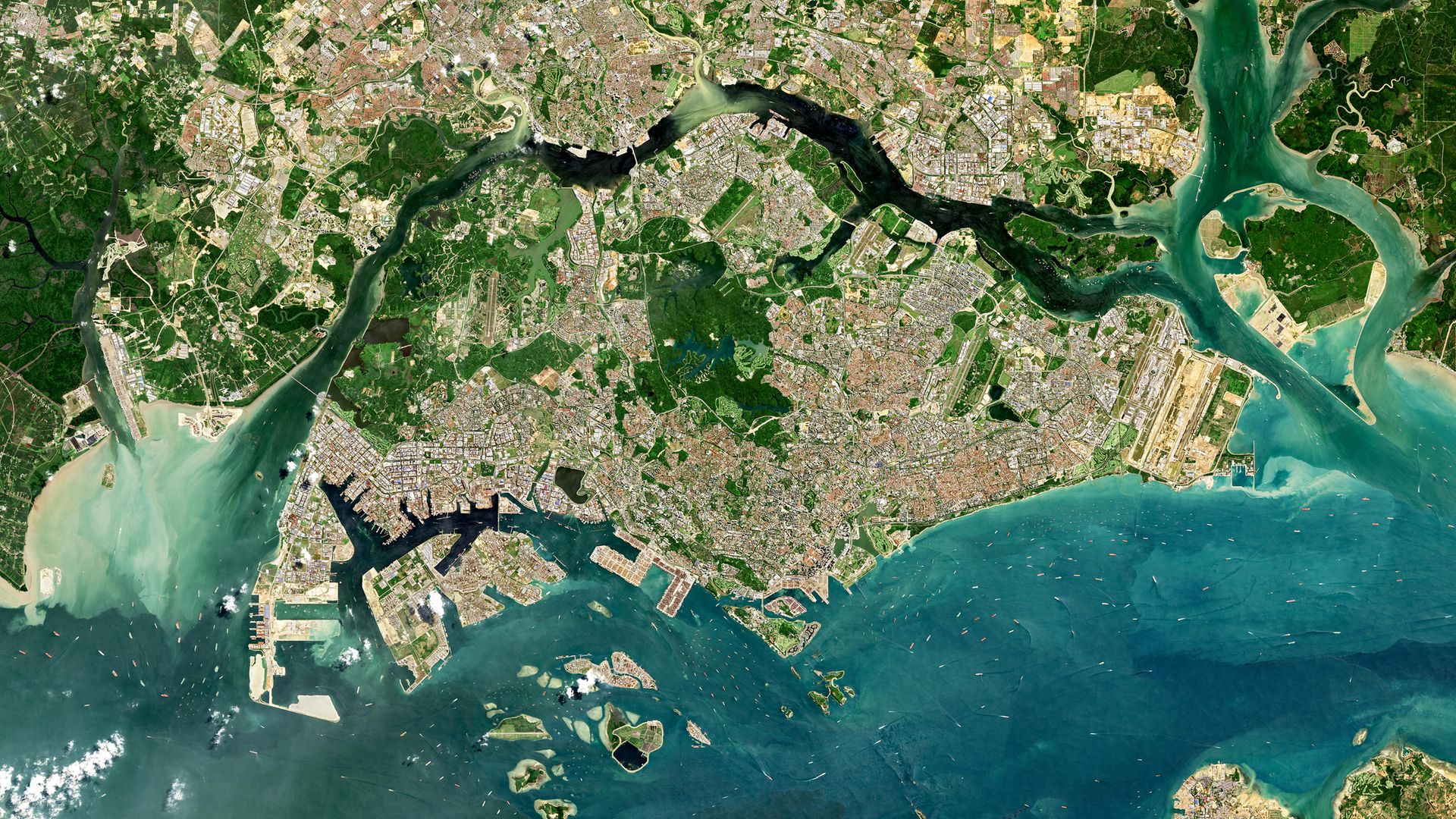
The spread of English as a narrative language now includes the Asian island nation.
Singapore, the large island off the southern end of the Malay Peninsula, is separated from the mainland by the Johor strait which is less than a nautical mile wide at its narrowest point.
A number of fascinatingly different mother tongues have been spoken on the island over the millennia. The earliest inhabitants of the peninsula we know about were speakers of Austroasiatic languages, the linguistic family which includes Vietnamese and Cambodian.
Some of these languages are still spoken by the aboriginal peoples of the peninsula, who are known in Malaya as Orang Asli, ‘original people’.
A sub-group, the Orang Seletar, still live close to Singapore on the shores of the Johor Strait, though they have lost their language and now speak their own distinctive form of Malay.
Much later, seafaring Austronesian-speaking people started settling in the region, arriving on the peninsula at some point before 500 BC.
This was the result of a centuries-long migration from Taiwan, via settlement in the Philippines and Indonesia, and on to Southeast Asia.
The island of Singapore and the surrounding areas came in time to be dominated by speakers of Austronesian, and specifically by the linguistic variety which became Malay.
A form of Malay then remained the main language of local people in Singapore for very many centuries. Malay is related to the Polynesian languages, the languages of the Philippines and Indonesia, the Malagasy of Madagascar, and Fijian, amongst many other languages.
Singapore was established as a British trading port in 1819, under the governorship of Sir Stamford Raffles. Waves of traders and labourers then began to emigrate from southern China to Singapore, as it rapidly became an increasingly successful entrepot and trading centre. By as early as 1826 there were more Chinese people on the island than Malays.
The main Chinese languages found in Singapore today are Hokkien, which has the largest number of speakers, Teochew, Cantonese, Hakka and Hainanese. The homeland of the Hokkien speakers was in southeastern Fujian. The Teochew people came from the Chaozhou area of the province of Guangdong/Canton, while the Cantonese speakers came mainly from southwestern Canton, by the Pearl River Delta where Hong Kong is situated. The Hainanese homeland is on the large southern Chinese island of Hainan.
Today, the official languages of Singapore are Malay, Mandarin Chinese, Tamil and English. The Malays are recognised as the indigenous people of Singapore, and Malay is officially the national language. The Chinese, however, have long been the biggest group of inhabitants on the island, though Mandarin was not one of the Chinese languages ever brought to Singapore by immigrants.
Tamils are the largest ethnic group of Indian origin in Singapore: Tamil, which is a Dravidian language whose homeland is in southeastern India and parts of Sri Lanka, is the native language of about three-quarters of the 10% of the Singaporean population who are of Indian origin.
Singapore became a fully independent nation-state on seceding from the Malaysian Federation in 1965, and English is now the main lingua franca – the language which is used for wider communication between speakers from different linguistic communities.
It is the main language of education, government and the legal system. For many Singaporeans, therefore, English is their primary language (the language they use most), even if it is not their first language (native tongue). But in fact more and more younger Singaporeans are now growing up with English as their native language, or one of their native languages, having spoken it since infancy.
The geographical spread of English as a native language around the world has thus now come to include the Asian island nation of Singapore. Singaporean English is now a distinctive variety of our language in its own right, though the increasing numbers who do speak it natively are not descended from immigrants who arrived from some native-English-speaking country, but have acquired the language in situ.
Orang
Malay and Indonesian are essentially the same language. The Malay and Indonesian word orang means ‘person, people’ – plurals are not generally indicated in the language. Orang Laut means ‘sea people’, from Malay laut, ‘sea’. And the English word orangutan is a combination of orang plus hutan, the Malay word for ‘forest’.
Warning: Illegal string offset 'link_id' in /mnt/storage/stage/www/wp-includes/bookmark.php on line 357
Notice: Trying to get property 'link_id' of non-object in /mnt/storage/stage/www/wp-includes/bookmark.php on line 37







